How to Make a Healthy Meal? – Fit Turkey Salad Recipe
Summertime is getting closer and closer each day so it’s about time to adjust our meals to the season. Summer foods are full of life, nutrition and vitamins, they’re hydrating, colourful and cooling. In the colder season, we focus more on cooked and warming foods to support our body in warming us up, but now our job is to keep our body hydrated and supply all needed minerals and vitamins. This is exactly why eating raw in this weather is more reasonable.
In this article, I will share a recipe for one of my spring favourites – a salad with golden curry turkey and roasted potatoes. I will follow that up with a simple, step-by-step guide on how to compose your own healthy meal without any recipes.
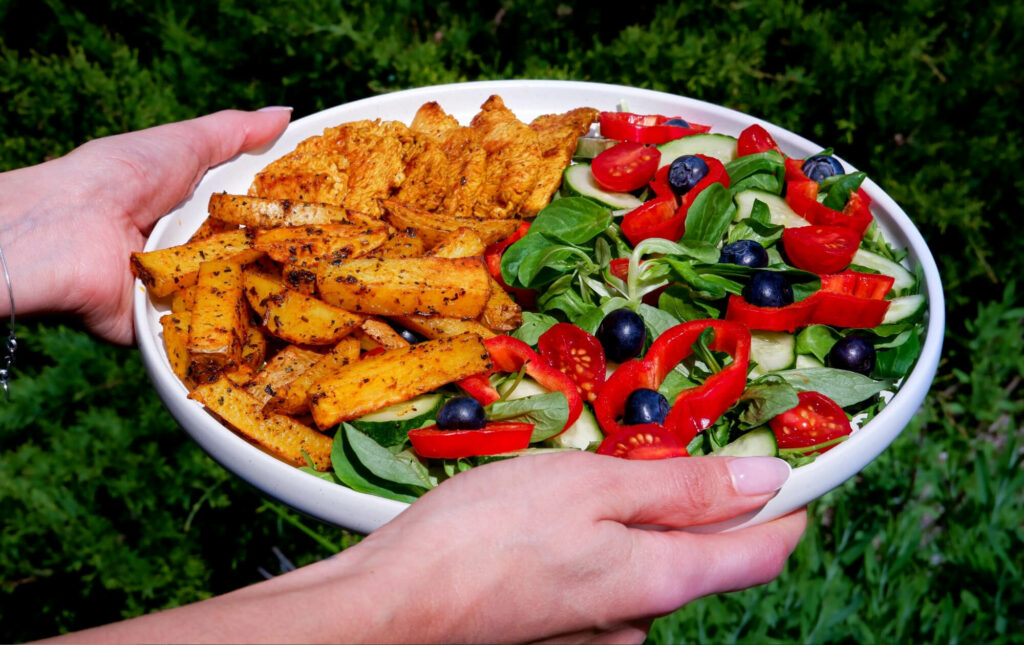
VITAMIN ABSORPTION
Salads should always be eaten alongside healthy fats because some vitamins, that are supplied by the vegetables, can only be absorbed into our bloodstream if they are eaten with fats. For this reason, we serve salads with dressings or slices of avocado and it’s important not to skip this ingredient trying to cut calories. Even a small quantity of fats will allow your body to absorb vital vitamins such as A, D, E and K.
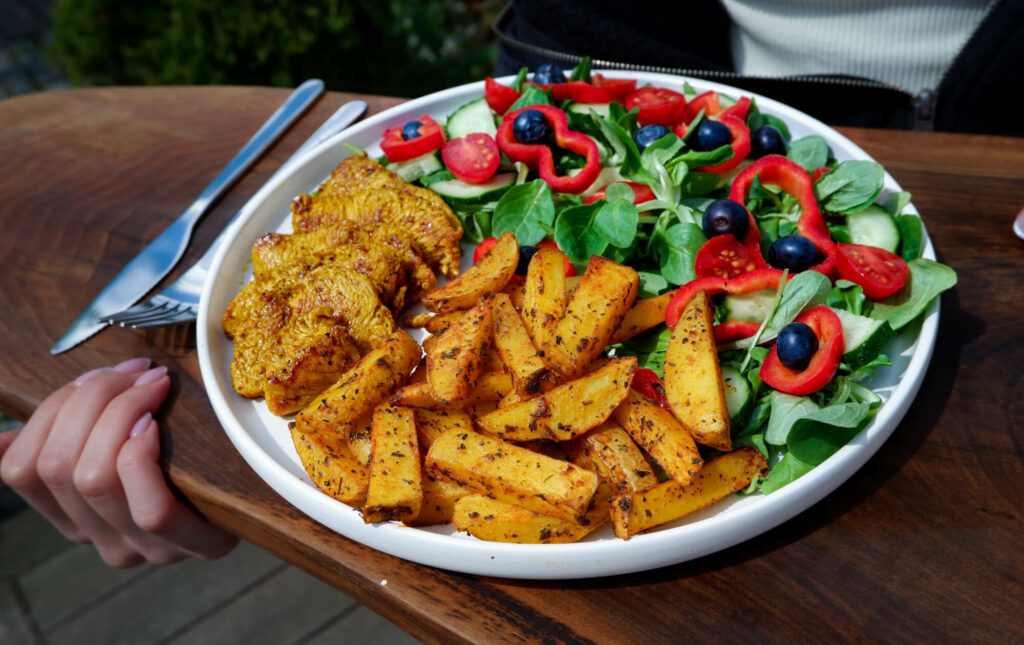
INGREDIENTS
- Lean turkey meat
- Potatoes
- Lamb’s lettuce
- Rocket salad
- Olive oil
- Red pepper
- Tomato
- Blueberries
- Cucumber
- Spices – salt, pepper, ground turmeric, sweet paprika, dried basil, curry spice
- Squeezed lemon juice (1 lemon)
INSTRUCTIONS
- Slice potatoes into thick sticks (“fries”) or wedges.
- Mix the potatoes with 1tbs of olive oil for every 3 medium-sized potatoes, salt, pepper, sweet paprika, dried basil and turmeric.
- Lay the potatoes on a tray and roast for 25 minutes at 180 degrees.
- Cut the turkey meat into thin slices.
- Mix the turkey meat with olive oil (2tsp for 100g), salt pepper, curry spice and lemon juice (1 squeeze for 100g).
- Lay the meat out on a pan and fry for few minutes until the sides turn gold/brownish.
- Wash and slice all vegetables and fruits.
- Serve all ingredients on a plate and season your salad with olive oil, salt, pepper and lemon juice.
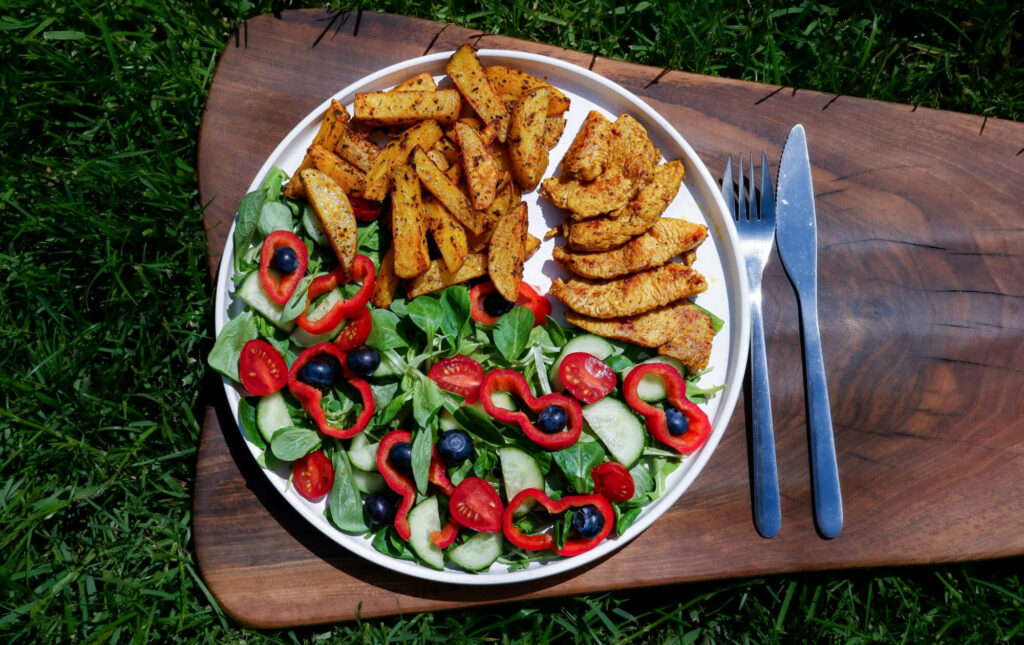
HOW TO COMPOSE A HEALTHY MEAL
A healthy meal should include all of the macronutrients – carbs, fats and protein. They come in many forms and flavours, so to make the most delicious meal for yourself, choose your favourites from those groups of foods. Depending on the season you may choose more warming or more cooling foods. I will not be including the exact quantities as those are personal choices and vary depending on your gender, age, activity level, height, weight etc. For specific quantity and calorie guidelines (tailor-made for you), you can consult a nutritionist, dietician or check out online calculators. Let’s begin composing our meal:
STEP 1 – Choose Your Protein
Why are proteins important? – Human body cells contain proteins, so they are our building blocks. Our body needs protein to repair cells and build new ones. The basic structure of a protein is a chain of amino acids.
Our body doesn’t create essential amino acids, therefore they must be supplied by food. In fitness performance, proteins help to regenerate muscles, reduce soreness and increase glycogen storage.
Examples: chicken, turkey, fish, beef, eggs, beans, chickpeas, legumes, hemp seeds
STEP 2 – Choose Your Complex Carbohydrate
Why are complex carbohydrates important? – Carbs are the body’s primary source of energy. Carbs are made of fiber, starch and sugar. Fiber and starch are complex carbs, while sugar is a simple carb. We should opt for complex carbs that are higher in fiber and are digested slowly, which makes them more filling.
Complex carbs come with many benefits including preventing blood sugar spikes after meals. In fitness performance, eating complex carbs help to maintain high energy levels and get through intense workouts.
Examples: Potatoes, sweet potatoes, rice, quinoa, millets, buckwheat groats, wholegrain pasta
STEP 3 – Choose Your Healthy Fats
Why are healthy fats important? – It’s crucial to remember that not all fats are the same. The “bad” fats (such as artificial trans fats and saturated fats) can be blamed for weight gain, clogged arteries, an increased risk of certain diseases. The “good” fats are however essential to balanced meal composition. They’re a source of energy, support brain and heart health and some vitamins (A, D, E, K) are absorbed only when consumed along with fats.
Unsaturated fats and omega-3 fatty acids help you manage your mood, boost energy levels and lower blood pressure. (Trans fat and Saturated fat are known as “bad” fats, Monounsaturated fats and polyunsaturated fats are knowns as “good” fats)
Examples: coconut oil, olive oil, avocado, olives, nuts, flax seeds
STEP 4 – Fill in with Vegetables and Fruits
Why are vegetables important? – Vegetables supply dietary fiber so they are technically complex carbs, which have already been mentioned. However, vegetables and fruits are low in calories so they can’t be the only complex carb in the meal. Vegetables and fruits are also crucial as they contain large numbers of vitamins and minerals that are essential for our health.
In different seasons you should choose different types of vegetables. For example, in cold temperatures, our body focuses its energy on warming us up so we should make digestion as easy as possible. We can do that by choosing cooked vegetables and fruits (boiled broccoli, roasted carrots). In the summer, we can opt for more cooling and raw vegetables that will also hydrate our body in the hot temperatures (cucumber, radish, peppers, salads).
Examples: salad leaves, tomatoes, peppers, cucumber, radish, broccoli, cauliflower, zucchini, carrots
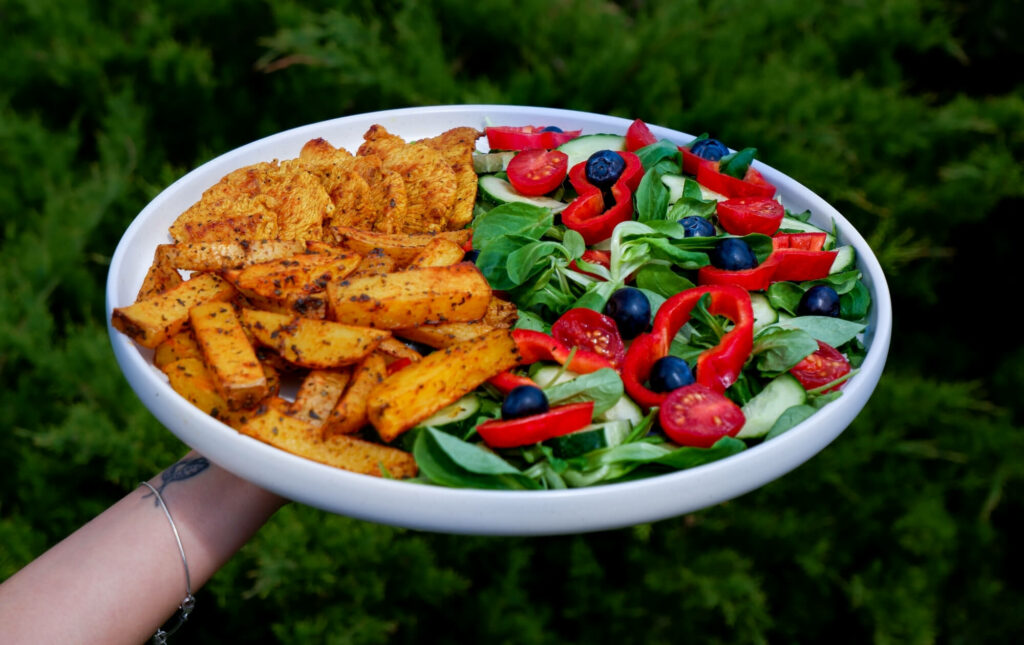
The key to a healthy diet is balance. You need foods that represent all the macro groups – fats, proteins and carbs. You can make healthier choices by going for lean proteins, complex carbohydrates that contain fiber and healthy fats (monounsaturated fats and polyunsaturated fats). The quantities of each are personal and can be calculated using accessible online calculators or can be counted by nutritionists and dieticians.
If you enjoyed this article check out our other recipes including GF Waffles Recipe, Blueberry Smoothie Recipe, Homemade Granola Recipe and Peanut Butter Brownies!
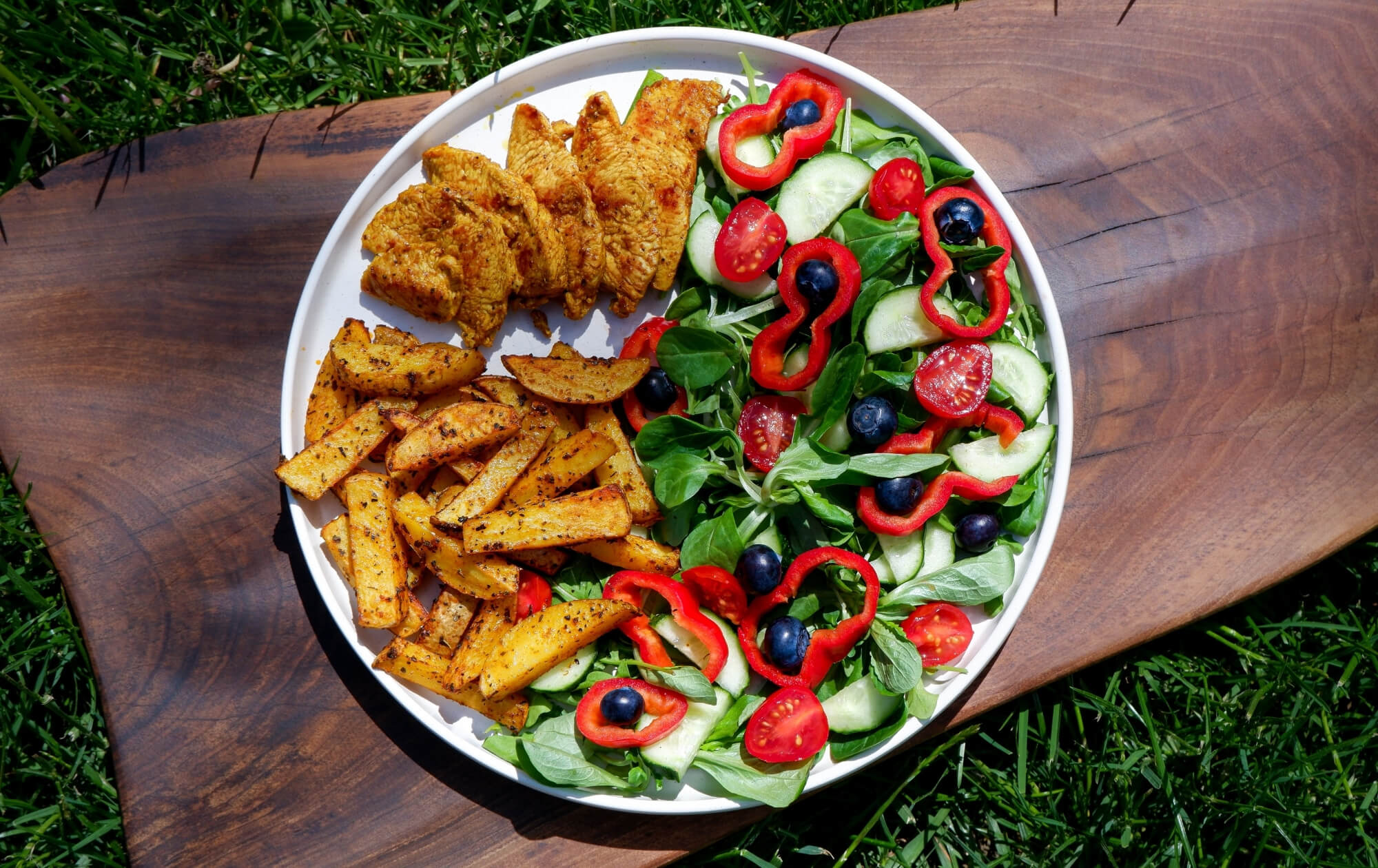

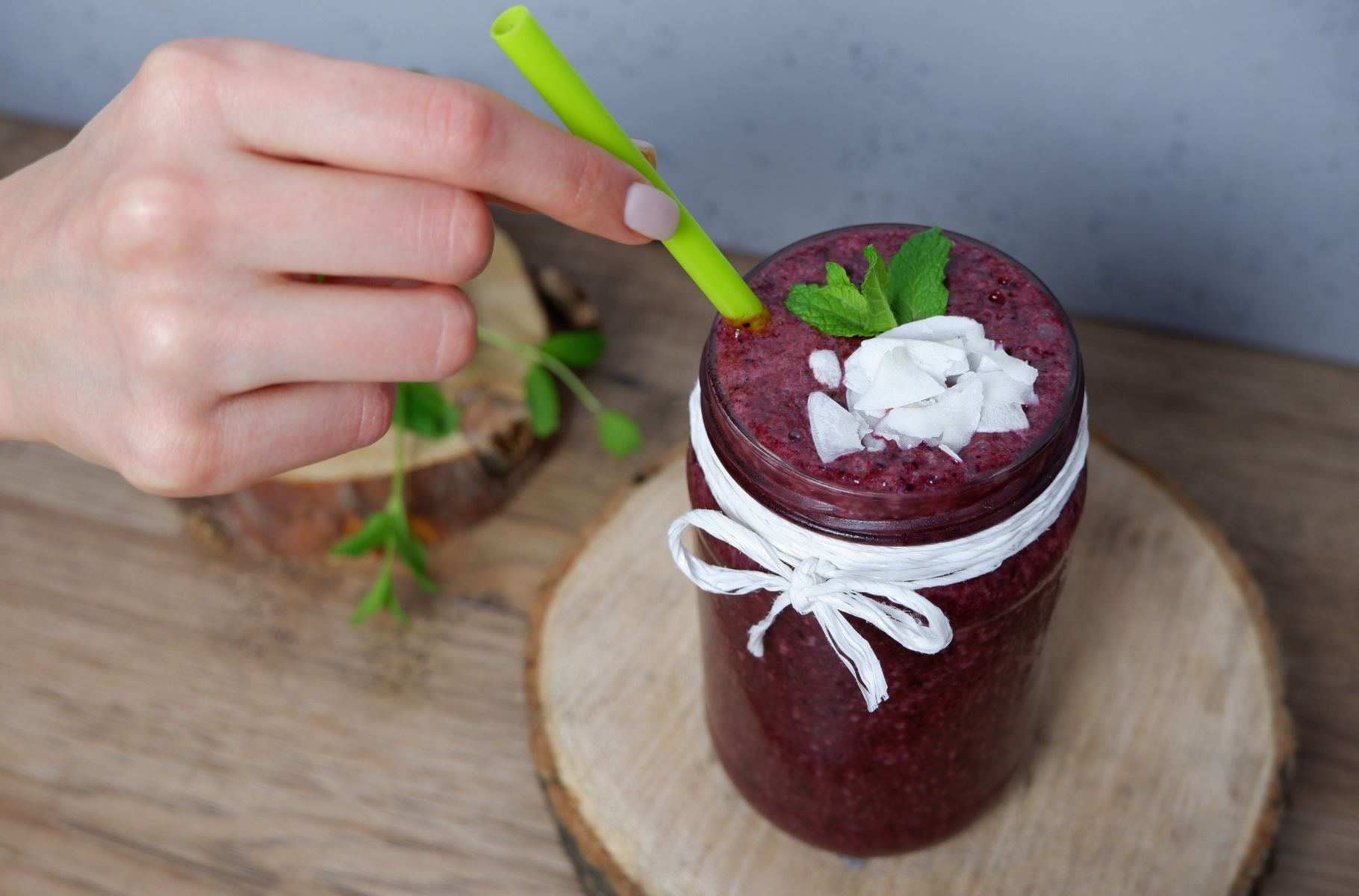
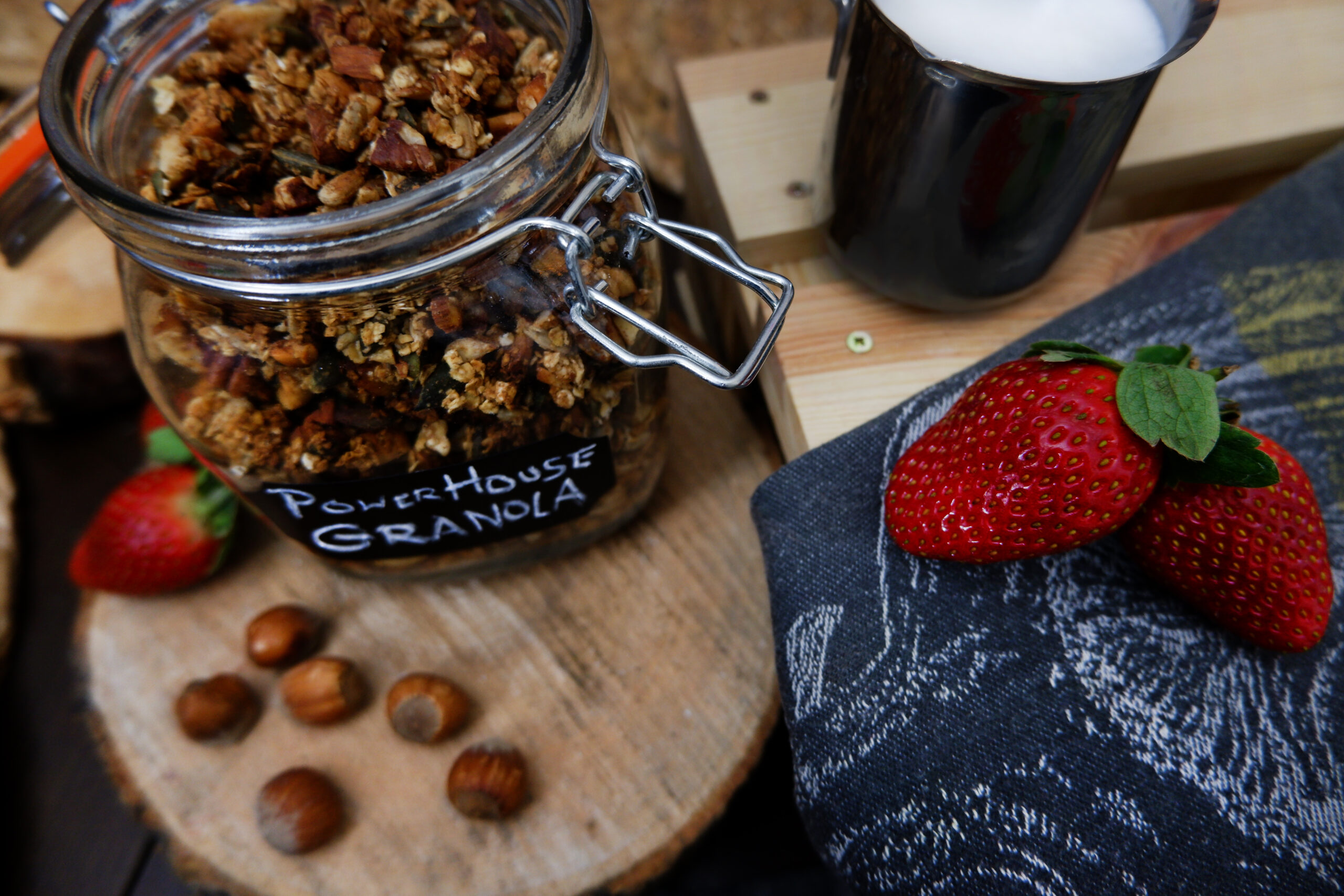
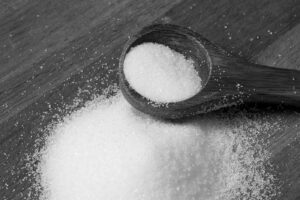
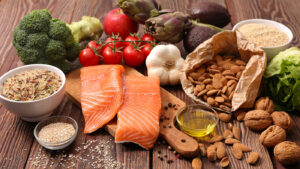



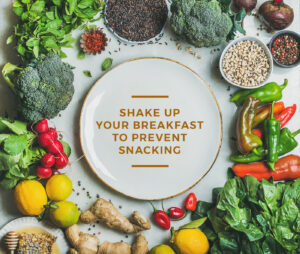


Post Comment